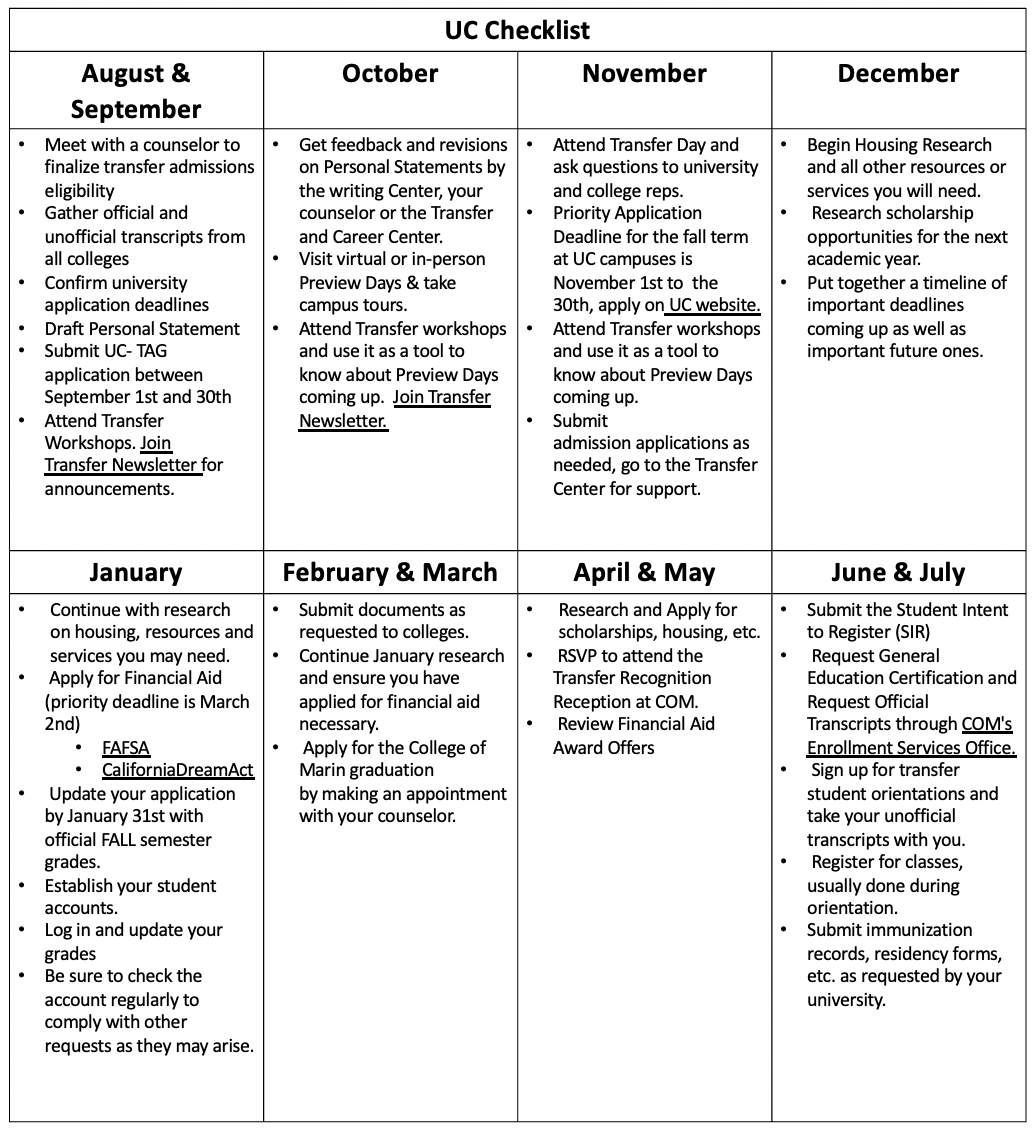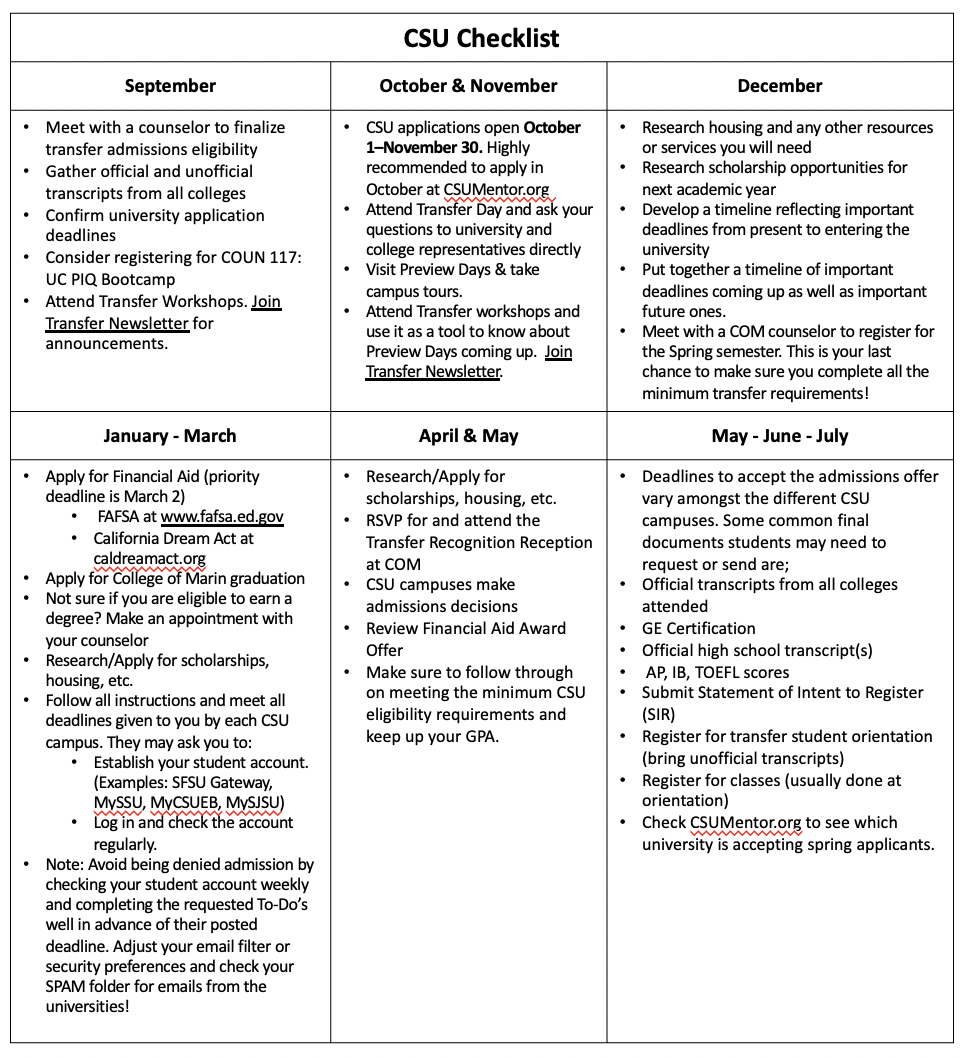Transferring to a four year college or university can feel overwhelming to some students, but with proper preparation and planning all students can transfer. The resources and guidance available to you by the COM counseling staff and Transfer and Career Center can assist you in making your transfer plan. We recommend all students meet with a counselor to determine a personal plan, a general pattern to follow is:
Step 1:Identify Your Major and/or Career Interests |
|---|
|
Step 2:Decide on Which Colleges or Universities You Would Like to Transfer To |
|---|
|
Step 3:Create and Follow a Transfer Plan |
|---|
|
Step 4:Research What is Required to Apply to Your Chosen Schools |
|---|
|
Step 5:Apply for, and Follow Up on All Application |
|---|
|
Step 6:Prepare for the Transfer |
|---|
Research all the resources available to you at your new school including those for transfer or re-entry students
|
TRANSFER CHECKLISTS
Fall Semester Transfers to UC and CSU
UC Transfer Checklist - Printable PDF. or CSU Transfer Checklist- Printable PDF.


